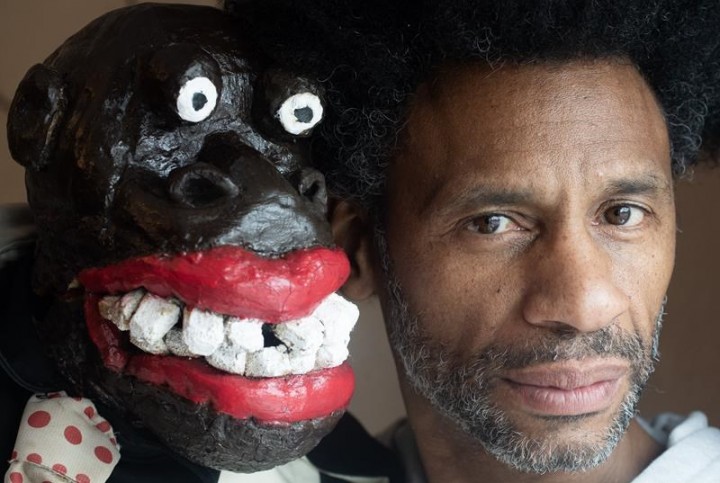MONTREAL — A theatre performance for children featuring a puppet that has been described as racist is continuing in the Montreal area.
Several Black community organizations have criticized the puppet as being reminiscent of blackface minstrel shows — racist performances during which white people portrayed exaggerated stereotypes of Black people for laughs.
But the show’s creator — Franck Sylvestre, who is Black — has no plans to change the puppet, which he said is a caricature of his own features. Sylvestre said in an interview he can’t accept the idea that he’s not allowed to create a caricature of someone who is Black because racists created caricatures of Black people in the past.
“That’s unheard of for an artist,” he said.
The play, called L’incroyable secret de barbe noire — French for The Incredible Secret of Blackbeard — first drew controversy in February.
A performance at a municipal theatre in the Montreal suburb of Beaconsfield, Que., was cancelled after complaints by Black community organizations. The neighbouring community of Pointe-Claire, meanwhile, removed the play from its official Black History Month programming but allowed the performance to go ahead.
Sylvestre, who wrote the one-man show in 2009 aimed at kids aged five to nine years old, said he had never received a complaint about his show before February.
A series of performances of the play, which combines theatre, storytelling, masks and puppetry, begins Sunday in Laval, Que., he said, before he takes it to France for 30 performances.
Sylvestre said the play tells the story of a young man who travels from Montreal to Martinique — the Caribbean island where Sylvestre’s parents are from — at the request of his dying grandfather, who is haunted by his discovery of a mysterious wooden chest with a connection to the pirate Blackbeard.
Max Stanley Bazin, president of the Black Coalition of Quebec, describes the puppet’s appearance as “very, very, very ugly” and said he worries that seeing a Black person presented in such a way could cause emotional damage to young audiences.
“It will have an impact on them, it will have an impact on the mind of the young people who see this puppet, and that’s what we should think about,” he said in an interview.
People are more likely to speak out about racism now than they were in 2009, Bazin said, adding that he thinks Sylvestre should listen to community members and replace the puppet with a less controversial creation.
“If there are people in society who have said this isn’t right, you have to react,” he said.
Philip Howard, a professor in the department of integrated studies in education at McGill University, said he’s not sure the puppet is an example of blackface — but he said that’s beside the point.
“There is still very much the matter of representation and the potential use of monstrous and grotesque representations of Black people as a source of entertainment and even humour,” said Howard, who has studied contemporary blackface.
Howard said the intentions of the artist are less important than the impact of the performance on an audience.
“Here we have, in this particular instance, a whole community of folks that are responding and saying, ‘Wait a minute, we don’t love this, we don’t think this is OK and we’re particularly disturbed about it during Black History Month,’” he said.
Dismissing the opinions of Black people who have a problem with the performance demonstrates anti-Black racism, he said.
Sylvestre said he thinks much of the criticism comes from people who haven’t seen the play.
“It’s the job of the community to see what purpose these caricatures serve; are they, like blackface, denigrating Black people, or, as in my case, are they being elevated?” he said. “This character, he’s a strong character for me personally, and when I made it, I was inspired by myself.”
He said the puppet, named Max, is “like a great sage,” whose interventions lead to the play’s happy ending.
“Max, he was the voice of reason, he was the one who advised us, who mocked me when I made a bad decision, who was above me,” he said.
Prof. Cheryl Thompson, who teaches performance at Toronto Metropolitan University, said she didn’t like the puppet when she viewed a trailer for the play.
“I was extremely shocked,” she said. “I just couldn’t believe what I was seeing.”
While blackface minstrel shows are primarily associated with the United States, Thompson’s research has shown that blackface performances took place in Canada, with shows in Montreal as recently as the 1950s.
Even though blackface originated with white performers, Black actors in the 1800s would also don the exaggerated makeup and participate in the racist performances for white audiences.
“It actually didn’t matter if it was a white actor in blackface or a Black actor in blackface, it was the caricature that audiences thought was funny,” she said.
Thompson said there’s room for theatre performances to be provocative. But performers, she said, need to engage with audiences and be willing to discuss artistic choices — especially when artists are performing for audiences whose histories might be different than their own.
“Why wouldn’t this person at least try to hear the voices of people who maybe have a different experience to him?” she said.
She said she wouldn’t take a child to see the show, especially during Black History Month.
“I just don’t see the uplifting messaging,” Thompson said. “I don’t see the messaging of ‘you matter,’ I just don’t see that celebration of life. I just see something that is steeped in a history of racial caricature and mimicry.”
This report by The Canadian Press was first published March 25, 2023.
Jacob Serebrin, The Canadian Press
Related

































